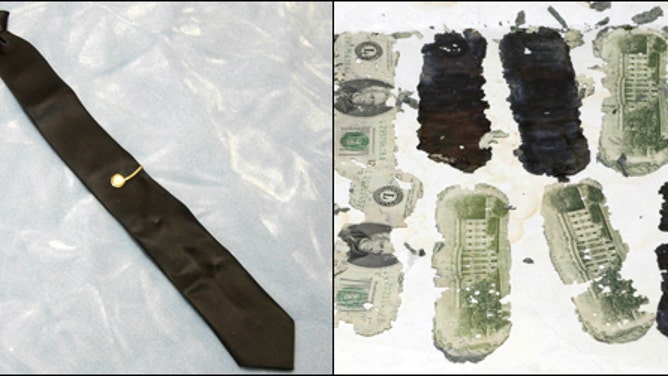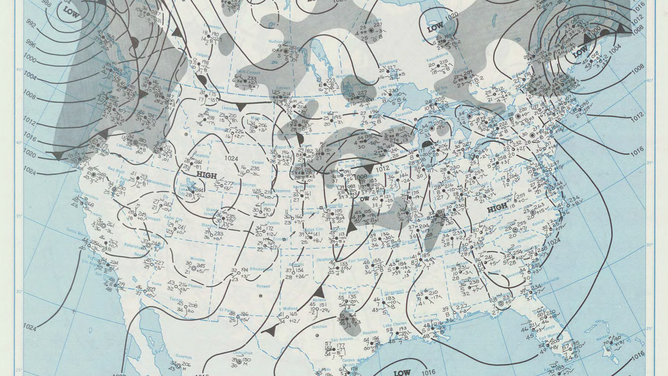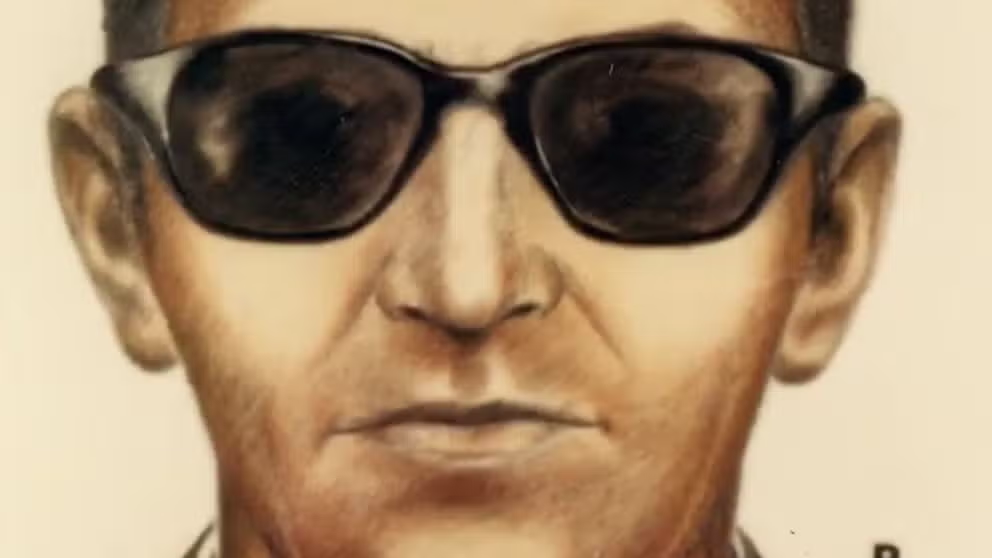Why D.B. Cooper should have checked the weather before his infamous hijack heist
It was pouring rain in lowlands and snowing buckets in the Cascade mountains when the hijacker known as D.B. Cooper decided to jump from a commercial airliner wearing only a business suit and loafers 53 years ago.
D.B. Cooper mystery: Did bad weather doom the heist?
Even if infamous hijacker D.B. Cooper had managed to survive his harrowing jump, he would have found himself in a battle with the elements.
SEATTLE – It's been 53 years since one of the most infamous cases and unsolved mysteries in the FBI's archives: The heist and legendary jump from a hijacked plane by the man simply known as "D.B. Cooper."
To this day, the case remains unsolved, and many questions remain: Did Cooper survive the jump into the rugged terrain of southwestern Washington? Is he still alive today? Did he ultimately get away with it?
However, one thing is for sure: By planning his heist for late November, he couldn't have picked a worse time of year in the Pacific Northwest to attempt his daring plan.
According to the FBI, Cooper used cash to buy a one-way ticket on Northwest Orient Airlines from Portland to Seattle on Nov. 24, 1971.
Wearing a business suit, he ordered a drink as the flight awaited takeoff. Shortly after, he passed a note to the flight attendant stating he had a bomb in his briefcase and wanted her to sit with him.

Left: During the hijacking, Cooper was wearing this black J.C. Penney tie, which he removed before jumping; it later provided us with a DNA sample. Right: Some of the stolen $20 bills found by a young boy in 1980.
(FBI)
He then opened his briefcase to show a mess of wires and colored sticks and told her to take a note to the captain demanding four parachutes and $200,000 in $20 bills.
‘It was simply too risky’
The flight landed in Seattle, and Cooper exchanged the 36 passengers for the money and parachutes, the FBI said. But several crew members remained on board, and Cooper ordered them to fly to Mexico City.
But as the plane passed somewhere between Mt. Rainier and northern Portland, Cooper ordered that the pilot open the aircraft's rear door. Cooper then took a parachute and the money and jumped out the back into the dark and rainy night, never to be heard from again, and the legend was born.
The FBI chased hundreds of people in an investigation that went on for decades but never could solve the mystery. The case received attention again last year when Eric Ulis, known for his History Channel and Discovery Channel investigations on Cooper's case, held a press conference stating that Cooper's black tie left on the plane contained important clues that pointed to a worker at a metal manufacturing company in Pittsburgh. He added the worker fit Cooper's description and frequently traveled to the Pacific Northwest for business. That person died in 2002 and his son said he doesn't believe his father was D.B. Cooper.
D.B. COOPER EXPERT: NEW EVIDENCE POINTS TO PERSON OF INTEREST IN UNSOLVED CASE
But agents say it's highly likely Cooper was not an experienced paratrooper and didn't survive the jump.

(Original Caption) The badly decomposed $20 dollar bills were shown to newsmen after check of their serial numbers showed that they were identical to the bills given to hijacker D.B. Cooper on November 24, 1971. The money was found by Brian Ingram, 8, who was searching for firewood while on a family outing with his parents, Mr. and Mrs. Harold Dwayne Ingram of Vancouver, Washington. The money was found on the north shore of the Columbia River, partially buried in the sand.
(Getty Images)
"No experienced parachutist would have jumped in the pitch-black night, in the rain, with a 200-mile-an-hour wind in his face, wearing loafers and a trench coat. It was simply too risky," Special Agent Larry Carr wrote in a 2007 case update. "He also missed that his reserve chute was only for training and had been sewn shut – something a skilled skydiver would have checked."
MORE: Read Agent Carr's theory of ‘Who Was Dan ’D.B.' Cooper?"
The FBI says the theory was given an added boost in 1980 when a young boy found a rotting package full of $20 bills ($5,800 in all) that matched the ransom money serial numbers.
If the fall didn't get D.B. Cooper, hypothermia might have
The night of Nov. 24 was pretty typical, weather-wise, for the region, which is to say it was cold and wet. The FBI says Cooper jumped sometime after 8 p.m. -- long after sunset -- and there were thick clouds at 5,000 feet that would have obscured the ground and where he was heading.
But in all likelihood, he ended up somewhere in the hilly or even mountainous terrain of southwestern Washington in the middle of an extended rain and snowstorm.
We don't know what the elevation was where Cooper landed, but weather data from Stampede Pass, which sits in the central Washington Cascades at 3,500 feet, and likely about 100-150 miles north of where Cooper ended up, registered steady snowfall on the 24th and for four days after. There was just 1 inch of snow on the ground there when dawn broke on the 24th, but by the 29th, there were 27 inches of snow, with temperatures hovering in the upper 20s to near 30 degrees through the period.
The FBI had focused on an area of lower terrain around Lake Merwin, though even that region had hills that stretched up to 2,000-2,500 feet in elevation. If the winds carried him farther east, the elevation rapidly increased.

D.B. Cooper's suspected landing area.
(FBI)
And data from Portland suggests the heavy precipitation did extend into southern Washington and northern Oregon. It was raining there that night of the hijacking, and over 1.50 inches of additional rain fell in Portland in the two days after, suggesting very stormy conditions in the mountains and foothills too.
If Cooper ended up in the higher elevations, he fell into a snowstorm; if he lucked into lower elevations, it was still pouring rain.

Surface Chart from 4 a.m. PST on Nov. 26, 1971 shows a strong front had just passed through the Pacific Northwest on Nov. 25. .
(NOAA)
And remember, Cooper was only wearing regular shoes and a business suit—hardly survival gear for a jump into the middle of nowhere where freezing temperatures and rugged terrain await. He was likely soaked from the jump and with little to no prospects of warmth, fire, or shelter amid consistent rainfall and/or snowfall.
But if he still somehow managed to escape the mountains and live the rest of his life in secrecy, it's not only one of the greatest heists of all time but one of the better survival stories.
If he didn't, it's a cautionary tale to check on the weather before heading outdoors.
If Cooper had bothered to check the weather before his daring heist – or even waited another hour to jump – he could have found more tranquil conditions.






